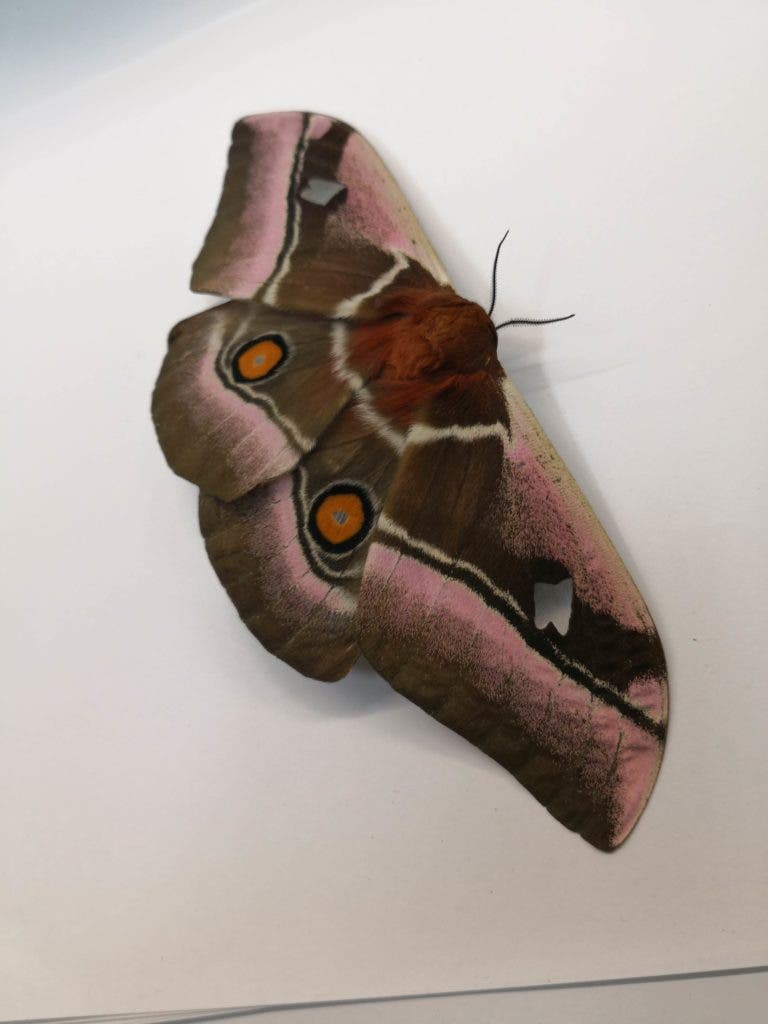A new study has found that moths have developed a remarkable type of camouflage — it’s acoustic rather than visual.

When we think of camouflage, we picture a visual image — something that blends in with the surroundings. That’s because when most creatures are hiding, they want to be out of sight. But if you were hiding from a bat, for instance, that wouldn’t make much sense: bats don’t “see” with their eyes, but rather with their distinct echolocation ability (think of it like a biological sonar). So to hide from a bat, you’d need a different mechanism.
That’s what some moths figured out a long time ago.
Moths are a mainstay on bats’ menu and, naturally, they’d like to avoid being eaten. So in response, some moths have developed ears that detect the ultrasonic calls of bats, but others have remained deaf — and seemingly helpless. But that’s not quite true: a new study has revealed that these insects developed a type of “stealth coating” that serves as acoustic camouflage to evade hungry bats.
Thomas Neil, from the University of Bristol, UK explains how the fur on a moth’s thorax and wing joints provide acoustic stealth by reducing the echoes of these body parts from bat calls.
“Thoracic fur provides substantial acoustic stealth at all ecologically relevant ultrasonic frequencies,” said Neil, a researcher at Bristol University. “The thorax fur of moths acts as a lightweight porous sound absorber, facilitating acoustic camouflage and offering a significant survival advantage against bats.” Removing the fur from the moth’s thorax increased its detection risk by as much as 38 percent.
Neil used acoustic tomography to quantify echo strength of two deaf moth species subjected to bat predation and two butterfly species that are not. He was able to show that acoustic camouflage appears in both moth species, but is absent in the butterflies.
“We found that the fur on moths was both thicker and denser than that of the butterflies, and these parameters seem to be linked with the absorptive performance of their respective furs,” Neil said. “The thorax fur of the moths was able to absorb up to 85 percent of the impinging sound energy. The maximum absorption we found in butterflies was just 20 percent.”

It’s not clear when this mechanism would have emerged. The hairs on the thorax are basically just elongated scales (as you find on the wing), which emerged around 200 million years ago, long before bats evolved (65 million years ago), Neil told me in an email. It’s very hard to say whether the emergence of bats made the moths become hairier.
But what does seem clear is that bats and moths are in a sort of arms race — as the moths develop their camouflage structure, bats try to overcome it — but it’s not that easy.
“Whereas some bats have shifted the frequency of their calls to try and hide from moths that have developed hearing, shifting the frequency to try and overcome the acoustic camouflage of moths would not work,” Neil told ZME Science.
“This is because the absorption is broadband, with the effect being consistent over the frequencies that we measured (20 -160 kHz, the range which most bats use). One thing bats could do would be to simply emit louder echolocation calls to try and get stronger echoes back from the moth, but we have not done any field testing yet to see if this is the case.”
Further research will try to establish how common this occurrence is, and whether there is a difference between deaf and non-deaf moths. There’s no reason why stealth coating and the ability to hear are mutually exclusive; although deaf moths have more evolutionary pressure on them to evolve this type of ability, it would still be a benefit for them to be able to camouflage acoustically, Neil adds.
“We only tested two moths in this study from the family Saturniidae (Antherina suraka and Callosamia promethea). The study is a sort of a proof of concept, we’ve shown that the fur on the thorax can absorb ultrasound, but the extent to which it is present amongst the many moth species is currently unknown.”
“We’re currently working on quantifying to ‘furriness’ of moths across different families to see if there is any relationship between the different forms of defence against bats, he concludes”.
Neil will describe his work during the Acoustical Society of America’s 176th Meeting.



